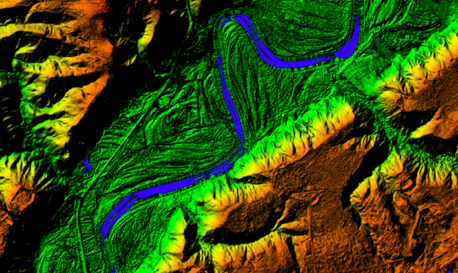Two pilot activities in full progress: hydrogeological models being processed for transboundary areas
Pilot 1 – transboundary area between Poland and Ukraine
As part of the WP3 – Assessment of the resources of transboundary groundwater reservoirs, the project team is working to create a numerical hydrodynamic model for the assessment of transboundary groundwater flows between Poland and Ukraine. The model will serve as a tool for joint management of groundwater resources between two countries as well as for the sustainable use of resources.
The model area is limited to an area with significant transboundary flow in usable (major) aquifers. The area identified in this way covers the area of about 7,150 km2 and it includes fragments of the catchment areas of the San and the Bug rivers in their upper parts.
The development of the conceptual model began with the preparation of three transboundary hydrogeological sections to create a conceptual model diagram. Within the conceptual model of the research area, two layers were distinguished: 1st layer – alluvial aquifer in the valleys of large rivers; 2nd layer is spatially heterogeneous. In the north it is the Upper Cretaceous fissured aquifer, in the central part – the Neogene fissured-porous aquifer, and in the south – the Quaternary porous aquifer.
The filtration field was calculated using the finite difference method in the Groundwater Vistas ver.6 software. The water-bearing system was mapped by means of a discretization grid with a step of 500×500 m. The variability of the thickness of individual layers was determined by interpolation of the surface of the roof and floor based on approx. 3000 archive drilling profiles. The basis for the model were series of measurements of groundwater table level carried out in the monitoring network and in selected intakes. A high degree of model compliance with the original was obtained, which is expressed by low error values.
Pilot 2 – transboundary area between Latvia and Estonia
Regional hydrogeological model of the Baltic Artesian Basin, called PUMA, is used as a framework for the assessment of Estonia-Latvia transboundary hydrogeological conditions. The model has been developed by the University of Latvia and is adjusted for the EU-WATERRES project needs to estimate groundwater flows between both countries. The area of interest is delineated from the extent of the regional model following the extents of trans-boundary groundwater bodies.
Model geometry is structured layer-wise considering the geological setting of the territory, with continuous hydrogeological properties throughout each layer estimated through calibration process.
Heterogeneous geological data from various sources were used to build the geometry of the model, including information from borehole descriptions as a main source whereas structural maps of key geological interfaces and geological maps of layer distribution extents were used as a supplementary material.
The model is calibrated on the groundwater level measurements in the monitoring wells supplemented with head measurements in exploitation wells. Considering the distinct time dependence of groundwater level observations, the year 2010 is chosen as the reference year for the model scenario where observations from the previous years are considered through the weighting coefficients.


